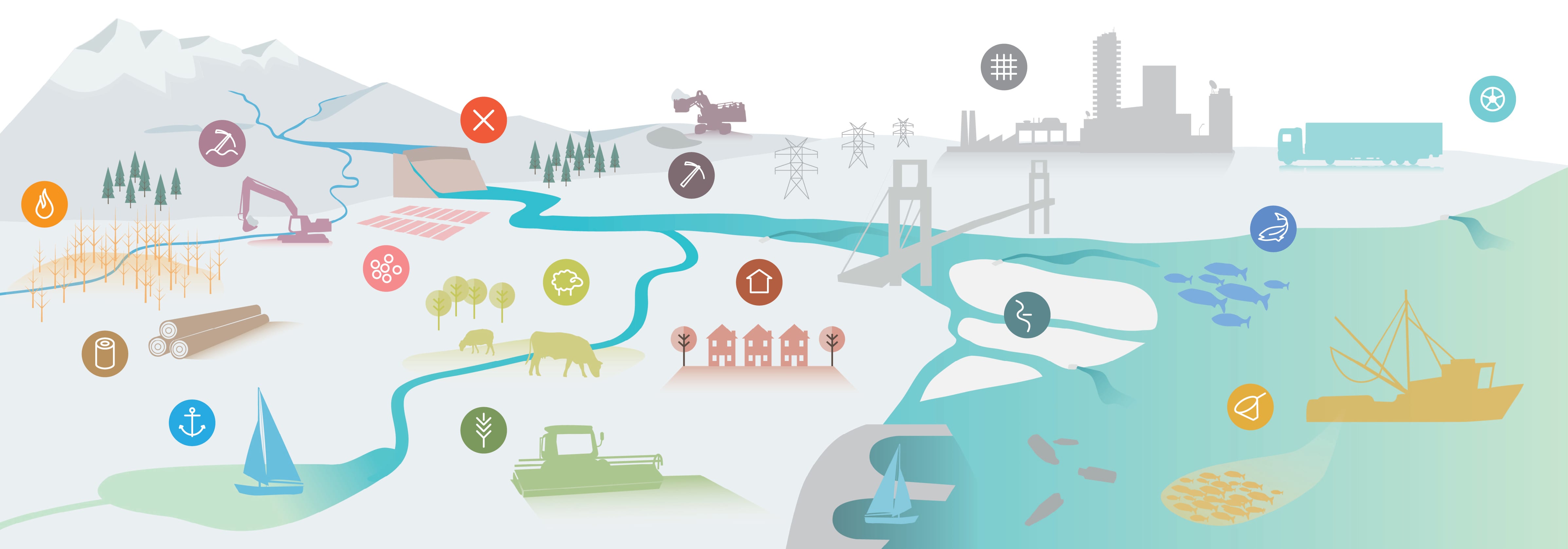
Climate change - the greatest threat to our native salmonids
Climate change is the major, overarching threat affecting salmonids in California. It is considered a critical or high threat for 27 of 31 species (87%). It is considered a low threat to only one species, the Coastal Rainbow trout.
The majority of salmonid species in California is currently facing, or is likely to face, extinction from climate change if present trends continue. The main effects of a warming climate on California salmonids are:1. LACK OF COLD WATER
Salmon, steelhead, and trout in California rely on cold, clean water to survive. Climate change is likely to reduce availability and access to cold water for salmonids in California through increasing average air temperatures and decreasing precipitation. In general, dry areas are likely to become drier, while wet areas are likely to get wetter. Particularly at higher elevations in California, precipitation is likely to fall as rain rather than snow, reducing overall snowpack and the critical snowmelt that provides cold water year-round to California’s salmonid species.
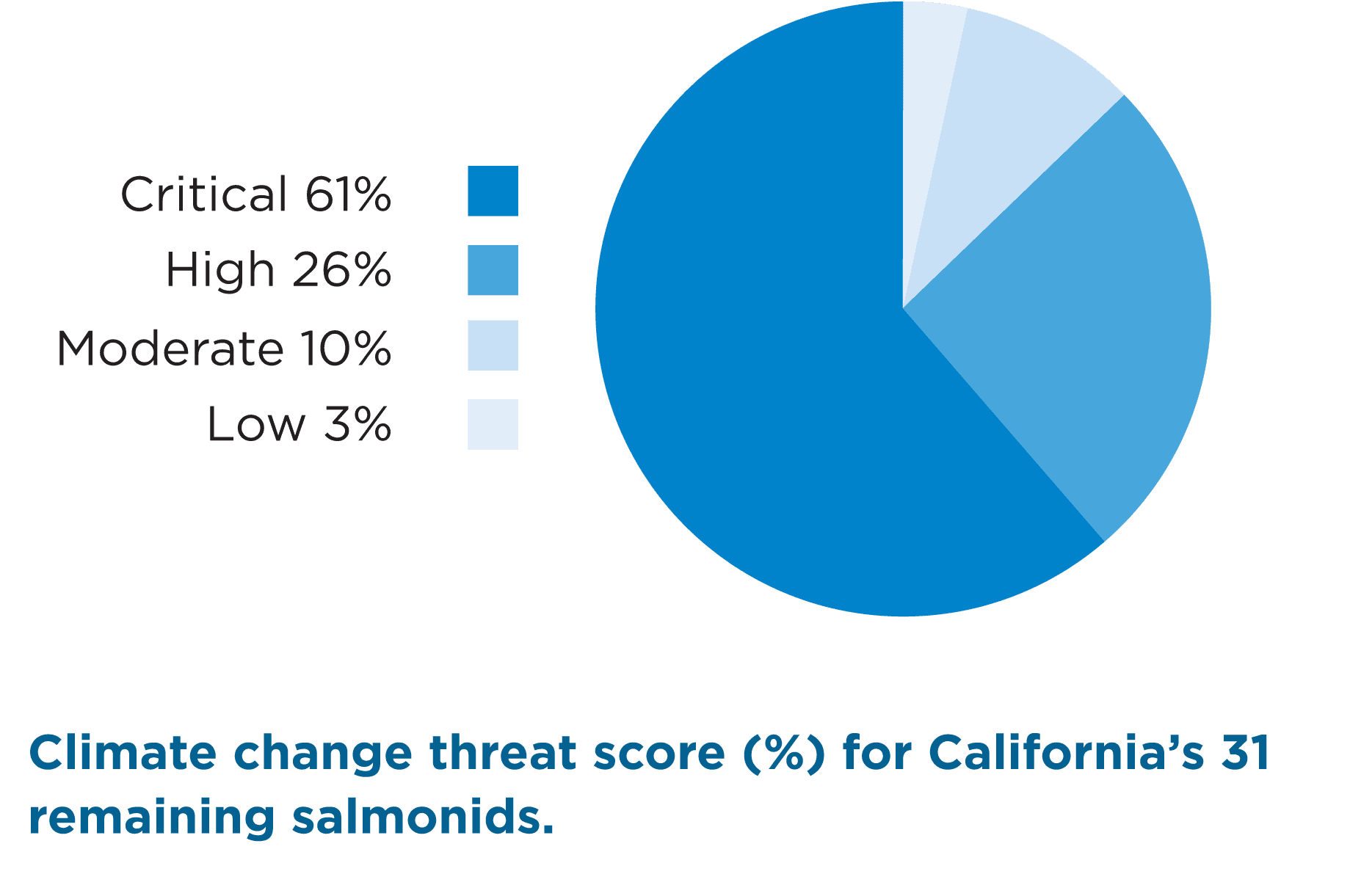
2. LOW AND VARIABLE STREAMFLOWS
Earlier runoff during the spring is anticipated, causing prolonged periods of low streamflows during summer and early fall. Variability in weather will also increase, causing more frequent, prolonged drought and high intensity storm events. Higher magnitude winter floods, reductions in annual streamflow, and broad declines in cold water habitat for fishes are already occurring, with increasing rates of these changes anticipated.
3. CONSTRICTED HABITAT
All salmonids require thermal refuge areas, diverse habitats, and broad ranges to persist in the face of climate change. Species with very limited ranges, such as Eagle Lake Rainbow trout, and those that over summer in freshwater waiting to spawn, such as spring-run Chinook salmon and summer steelhead, are most susceptible to climate change because they are least able to access these refuge areas, which are largely inaccessible behind dams, diversions, and waterfalls.
4. REDUCED HABITAT SUITABILITY AND SURVIVAL
As temperatures increase and streamflow regimes change, habitats become less suitable for native salmonids and invasive species tend to thrive. Alterations in the amount and timing of streamflows reduces the survival of all juvenile salmonids. In the Pacific Ocean, sea surface temperatures are likely to increase, making ocean habitats less suitable for growth and survival of salmon and steelhead in the future.
5. FOOD WEB ALTERATION
In the Pacific Ocean, climate change is likely to reduce the powerful upwelling of the California Current, which drives primary productivity and supports the entire food web for all marine life, including anadromous fishes. Increased ocean acidification is also likely to impact ocean productivity.
6. RISING SEA LEVELS
Rising sea levels are likely to inundate and degrade important estuarine and lagoon habitats, historically critical components of the juvenile salmon and steelhead life cycle.
Salmon, steelhead, and trout have adapted to a wide variety of climatic conditions in the past, and could likely survive substantial changes to climate in the absence of other human-caused stressors. By taking actions to reduce the threats identified in this report, allowing salmonid species access to a variety of high-quality habitats at appropriate times, and increasing population abundance, species resilience to climate change can be improved.
Human impact on our native salmonids
The population of California is approaching 40 million people. We live in a highly altered natural environment. As such, the human impact on the state’s salmonids were important to include in the SOS II report because:
1. California’s salmonids can adapt to natural environmental change, but that ability is limited when faced with these human-induced threats.
2. Human-caused threats limit the long-term viability of salmonid populations by decreasing their resilience to change.
3. Determining which threats have the greatest impact on species can help to target conservation and restoration efforts, providing a roadmap for a return to resilience.
The top three human-caused threats, after climate change, vary by anadromous and inland species as would be expected given their different life histories. The top threats to anadromous species are overwhelmingly estuary alteration, major dams, and agriculture, while inland species face threats from alien species, fire, and hatcheries.
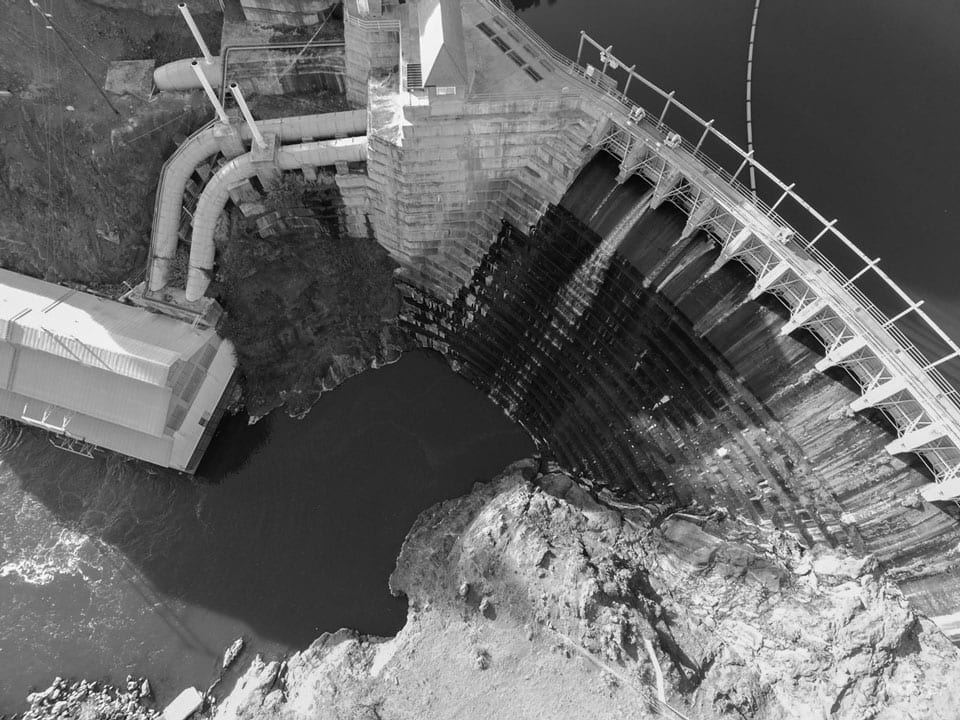












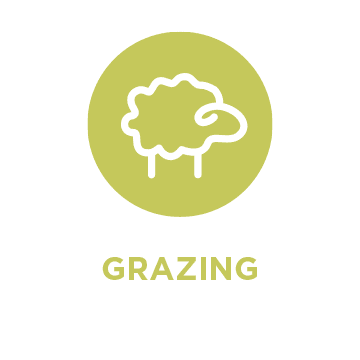




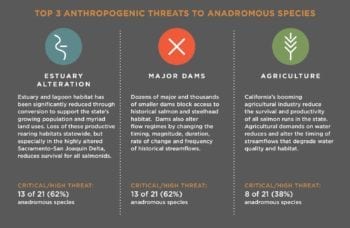
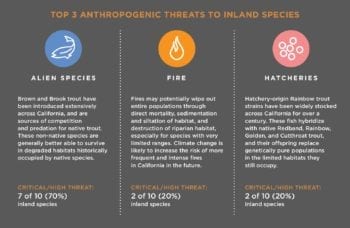

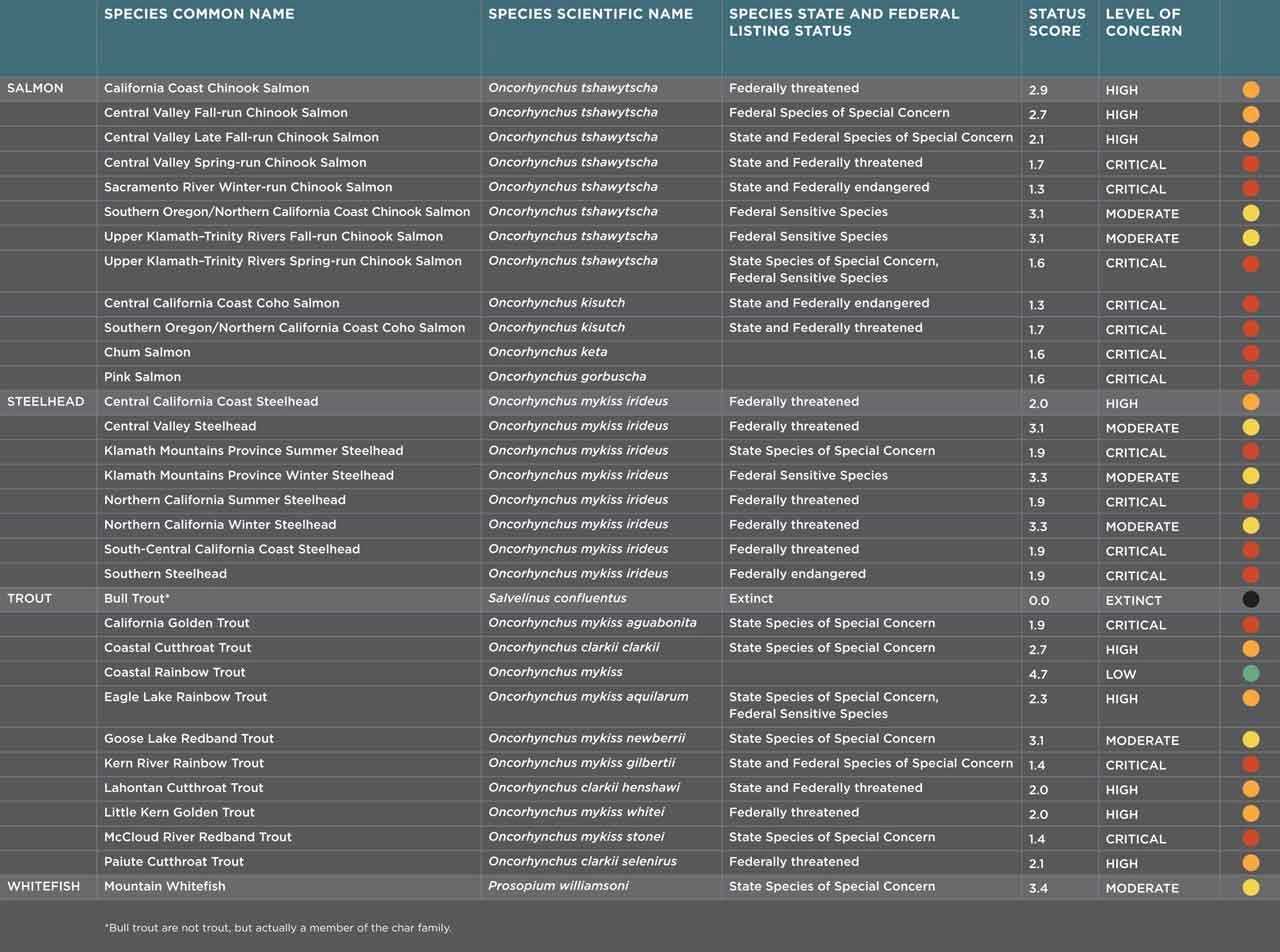












 Dams block access to historical spawning and rearing habitats. Downstream, dams alter the timing, frequency, duration, magnitude, and rate of change of flows decreasing habitat quality and survival.
Dams block access to historical spawning and rearing habitats. Downstream, dams alter the timing, frequency, duration, magnitude, and rate of change of flows decreasing habitat quality and survival.